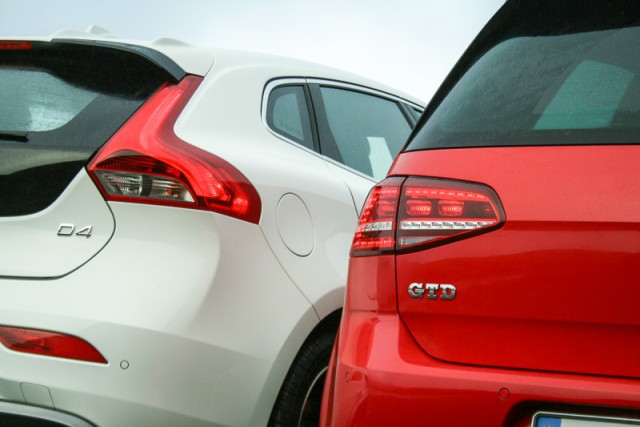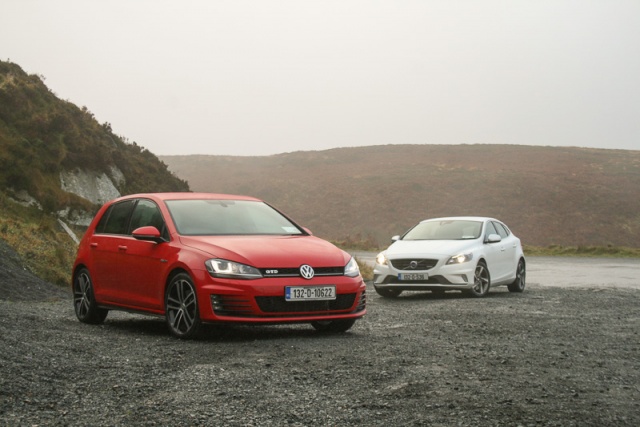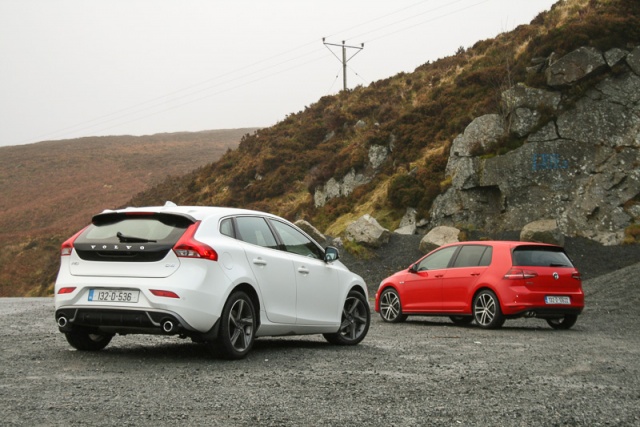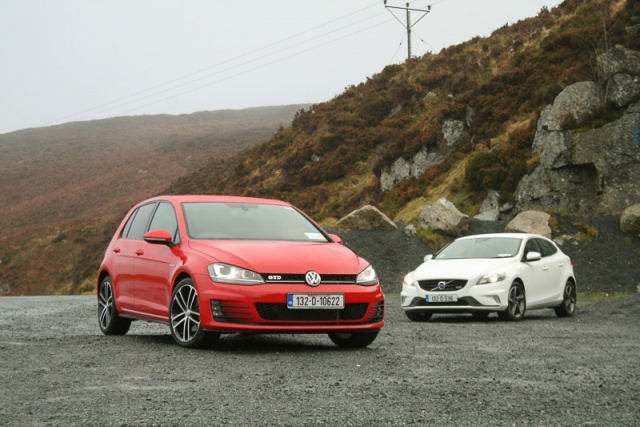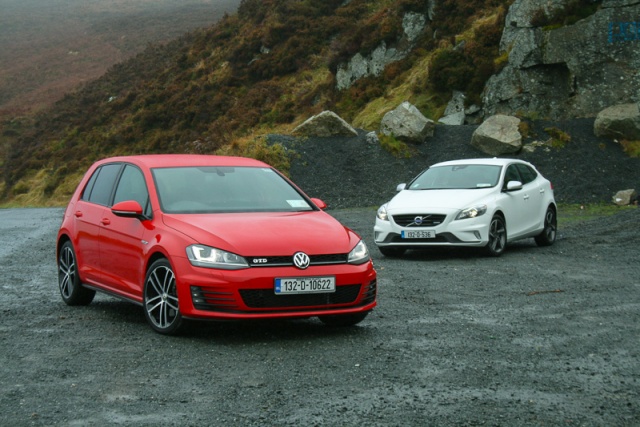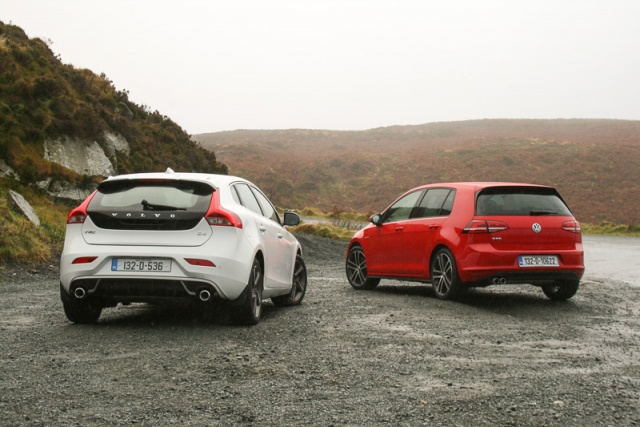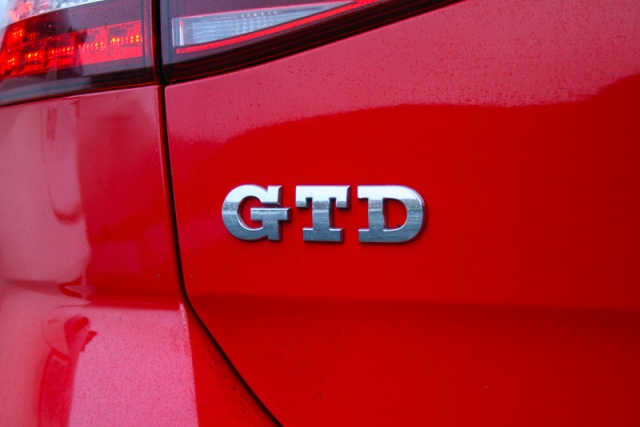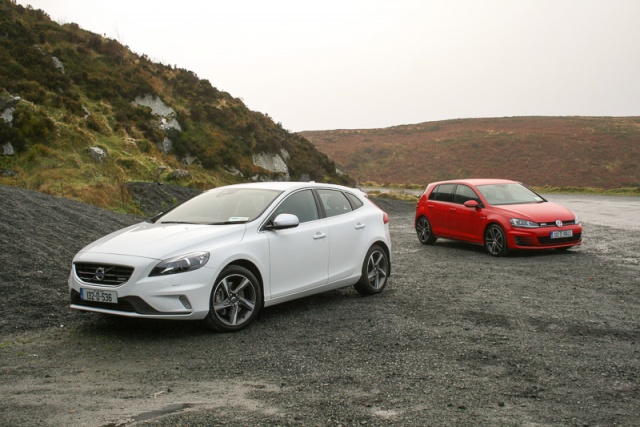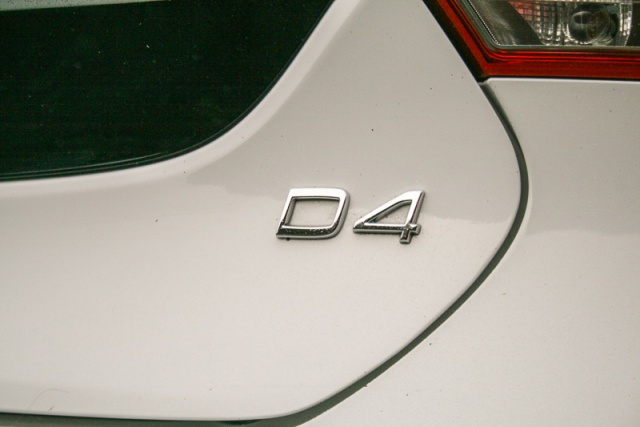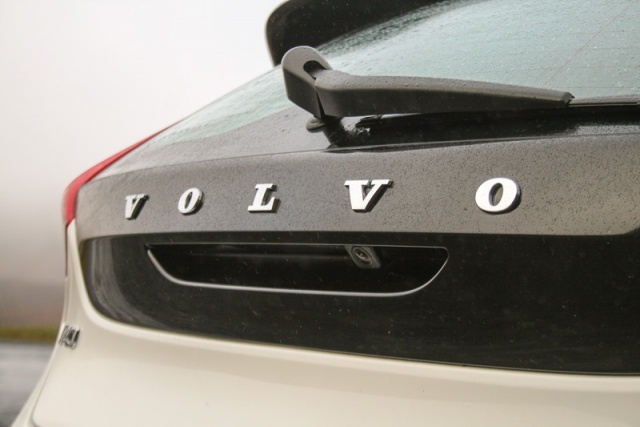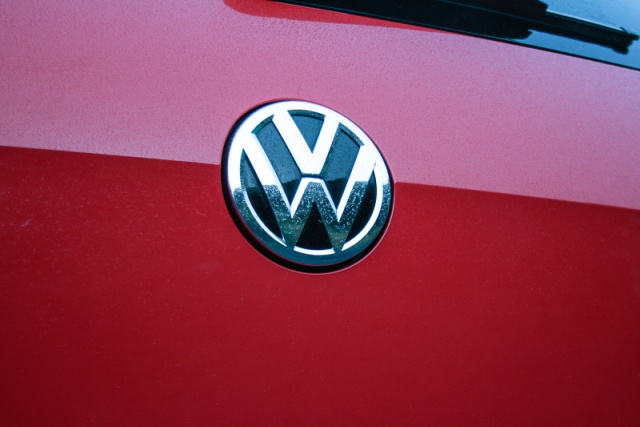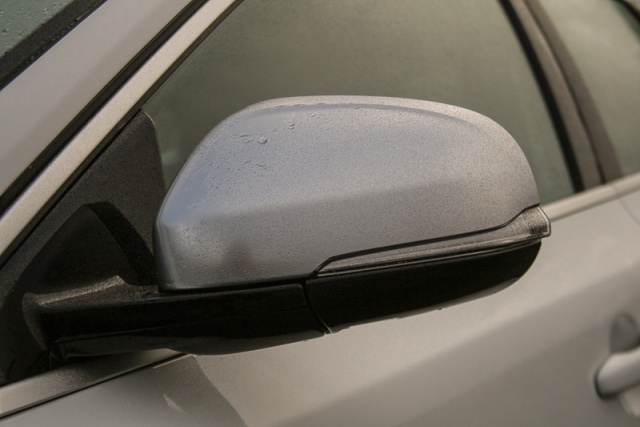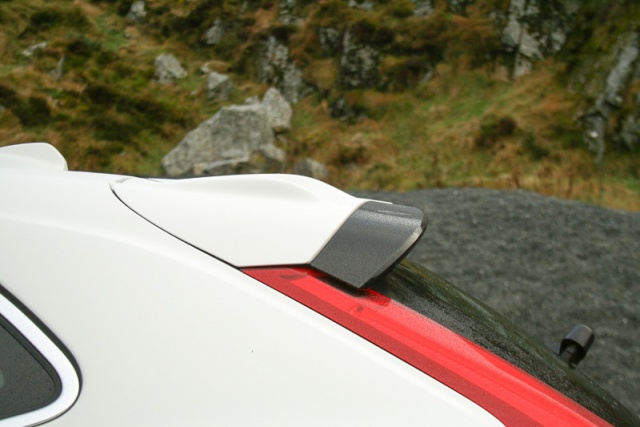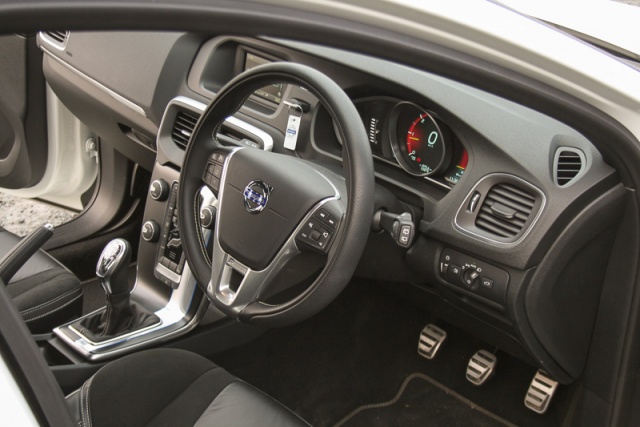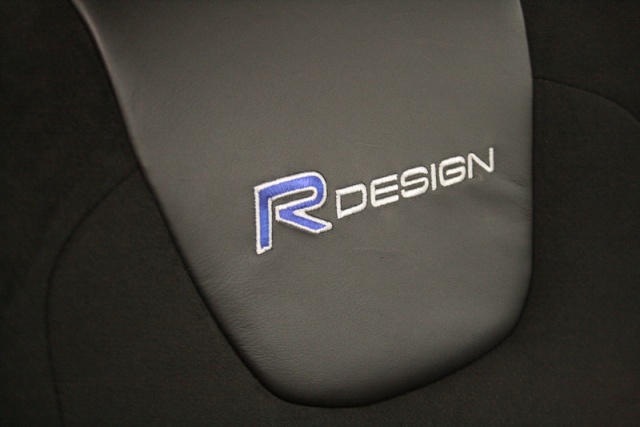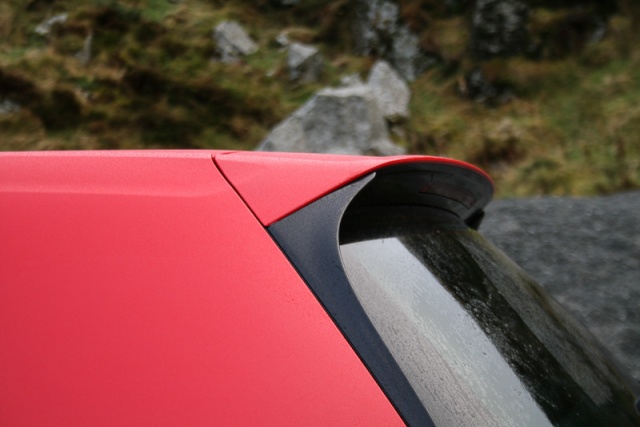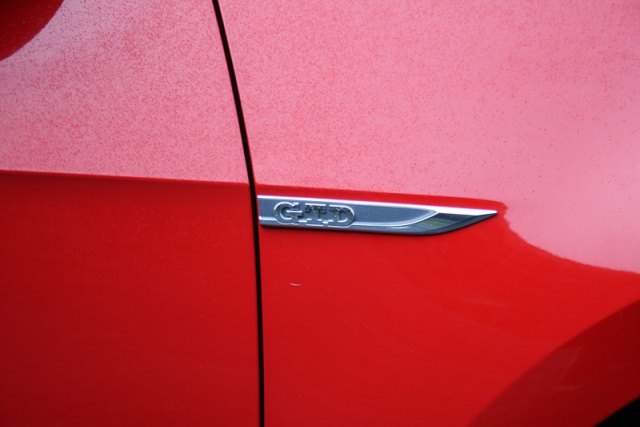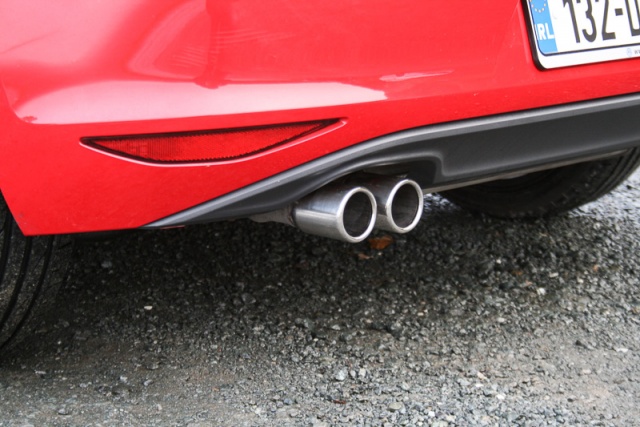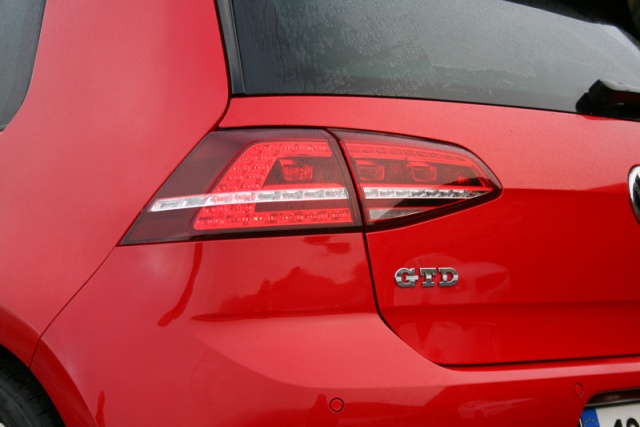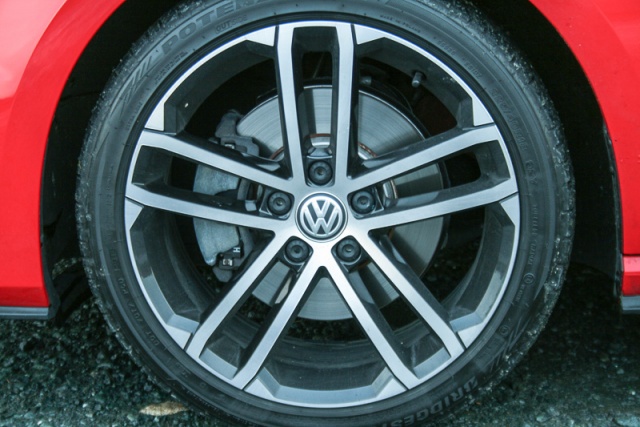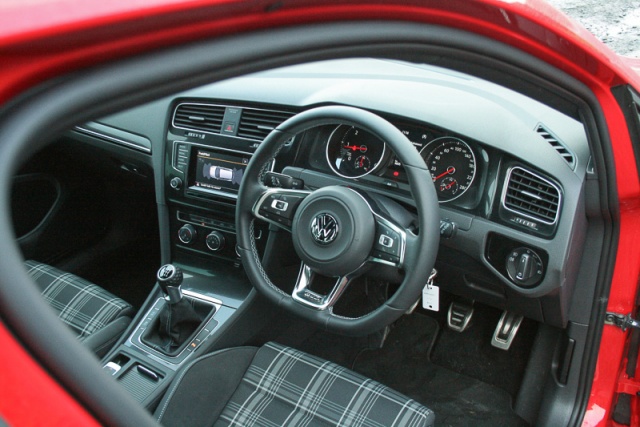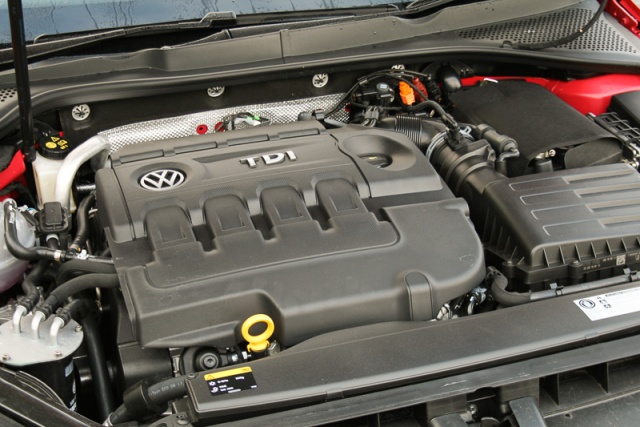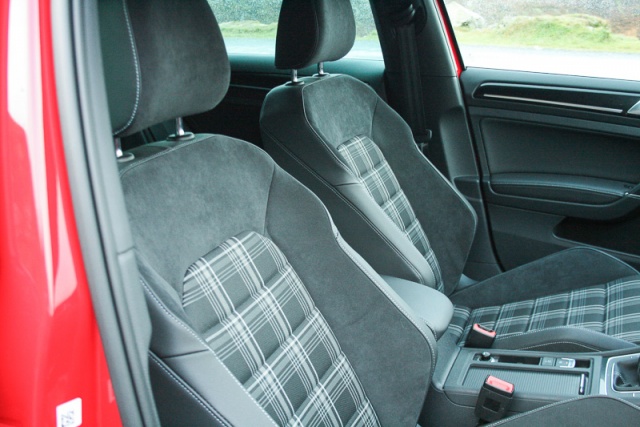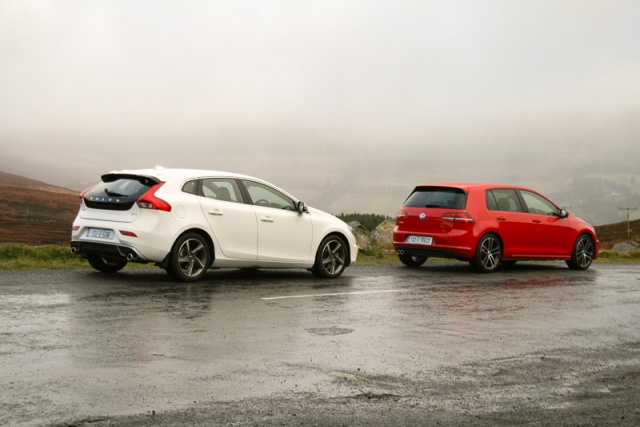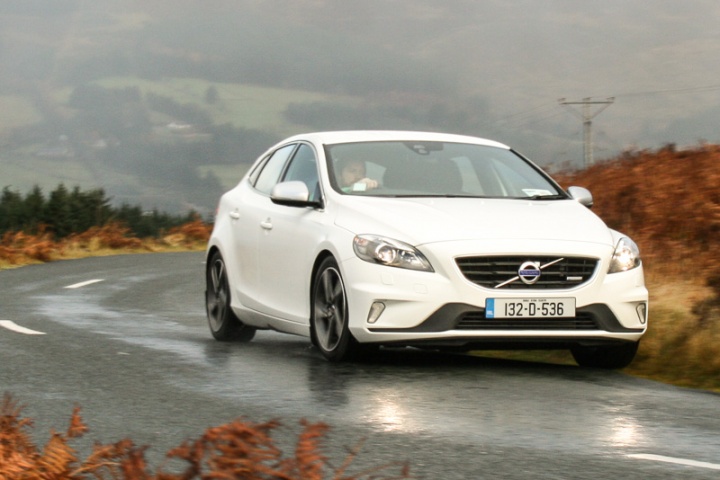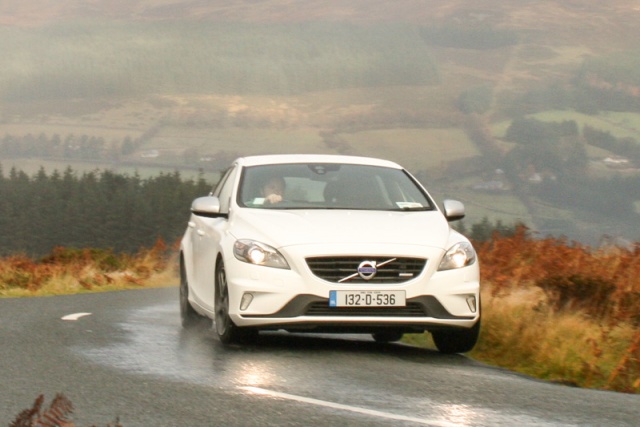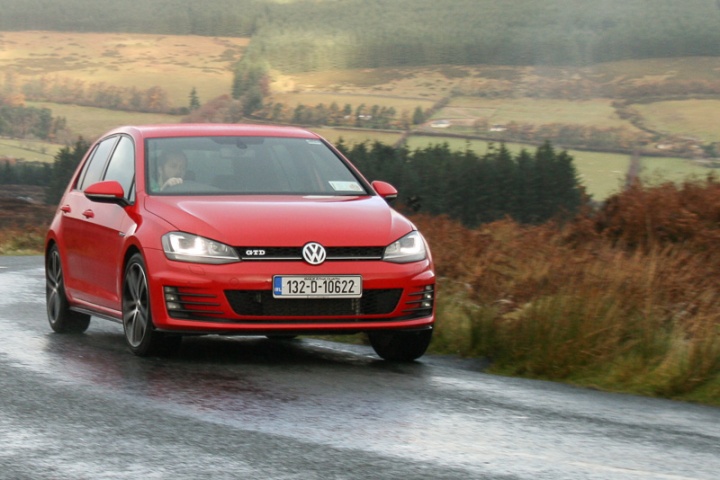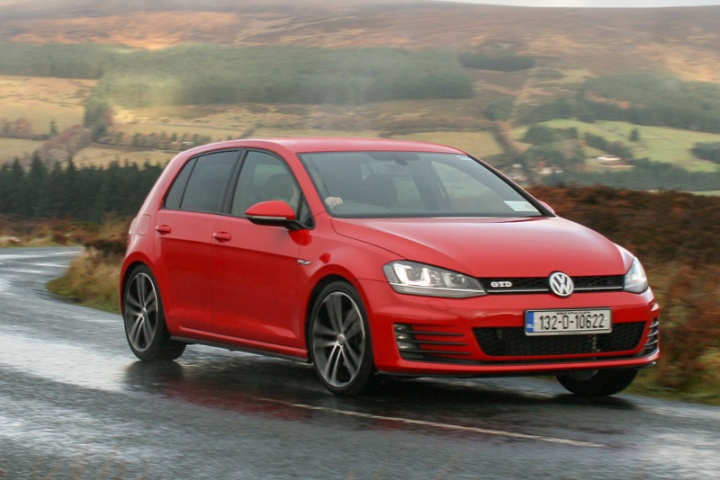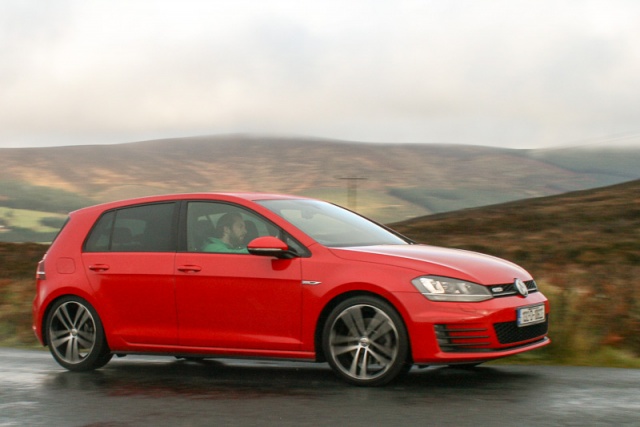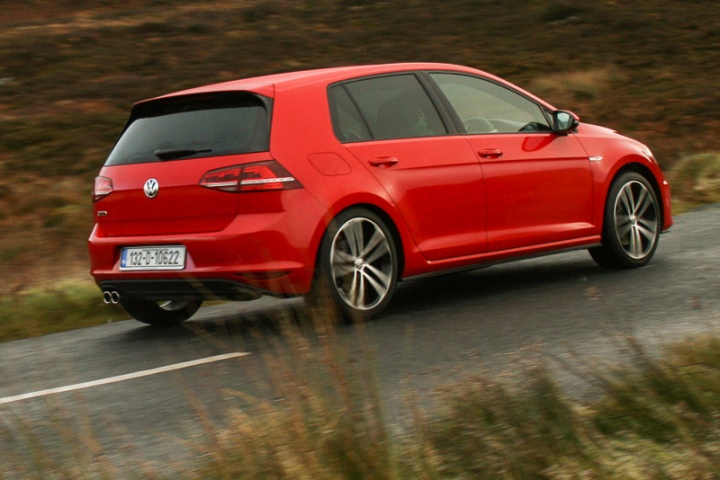Changes in emission laws and buying habits has led to the hot hatch segment developing a new sub-section, the performance diesel. We pit two of the top contenders on paper against each other.
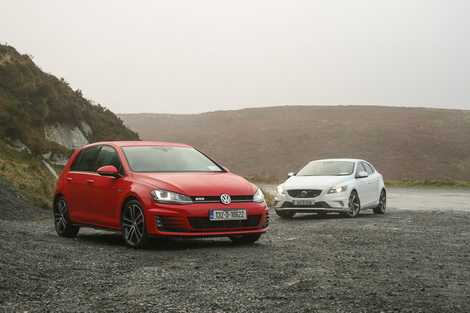
Key Facts
Volkswagen Golf:
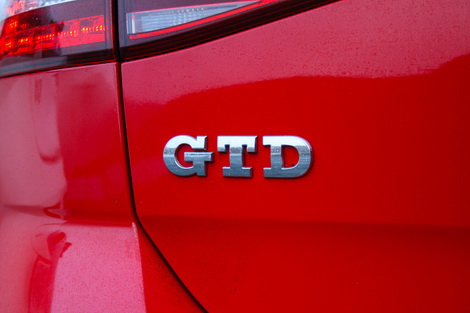
Volvo V40:

In the Metal
Aesthetically there is little to differentiate the new Volkswagen Golf GTD from its more famous petroleum-fuelled GTI sibling barring badging and the lack of a red stripe in the headlights and front grille. It wears the same aggressive front bumper, which is accented by some stacked strakes that have, we suspect, more of a visual impact than an aerodynamic one. Along with some nicely moulded side skirts and a neat rear spoiler the GTD turns the Mk VII Golf into a very good looking car. A big part of this transformation is in the car's stance, which, thanks to some upgraded suspension that it shares with the GTI, gives the car a real sense of purpose even when parked up.
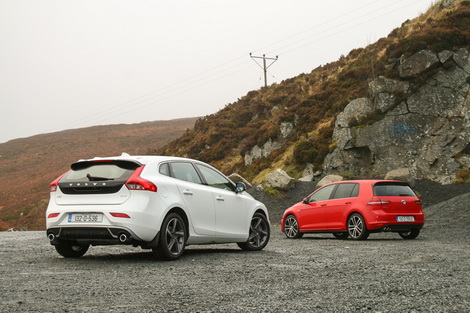
The Volvo on the other hand is incredibly discreet in comparison. Our test car, even in the sportier R-Design trim, looks positively normal. Perhaps if it were painted in that loud 'Rebel Blue' colour that tends to adorn the current crop of performance Volvos it would stand out a little bit more. That said, Volvo does take a slightly difference approach to its model line-up, meaning that, unlike the GTD, which is a defined model in its own right, this V40 D4 is essentially just a regular V40 with a higher performing diesel engine. Some may prefer the subtlety of the Swedish car.
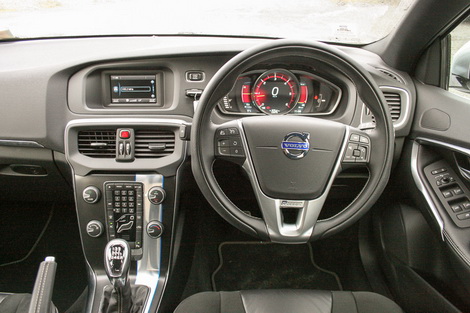
The interior of the V40 does feel well put together and is close to, if not on a par with, the more recognised premium brands in the market. Fit and finish are excellent, as is the use of materials, although it can look a little bit dull, so opting for brighter colours is recommended. A conscious effort has been made to make the interior feel tidy and organised but the result is a central facia that is cluttered with buttons, which, even after spending a good deal of time in the car, don't come to hand intuitively. On top of that, the standard colour infotainment screen is small in comparison to what rivals now offer. You can upgrade this to a larger screen at an additional cost. The LCD instruments (a standard feature on R-Design models) will be considered a novelty by some, but are clear to use and look sharp. As for the rest of the cabin the sports seats that are a feature of the R-Design package look superb and offer decent levels of support without being proper bucket seats that tend to get bolted into performance hatches. Personally I didn't get on too well with them, as I struggled to find a seating position that was right for me and actually found them to be a pain on longer drives.
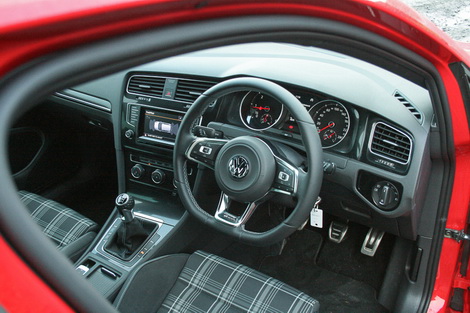
I didn't have such a problem with the GTD's seats, which offer better levels of support, especially laterally. The tartan-like inserts may not be to everyone's taste but to those who don't like them just remember that you can't see the design when you're sitting in the seat! Volkswagen hasn't changed the interior layout of the GTD apart from adding some nice small touches. The fascia, despite utilising a lot of plastic, is very well finished and the controls are that bit easier to navigate than the Volvo's. As you would expect with a car that has evolved over forty years, everything feels instantly familiar from the moment you sit in, but you also have to appreciate the little touches, like the roof mounted LED courtesy light that just happens to shine down and illuminate the polished GTD badge at the base of the steering wheel when getting in.
Driving Them
On paper it is hard to separate these two cars by much. The Volvo's 177hp peak power loses out to the Volkswagen's 184hp, but makes up for it in the torque stakes with a 20Nm advantage, and given the nature of diesel engines many could see that extra shove as being of greater benefit. From a standing start the GTD puts down the power in a far smoother fashion and makes life very difficult for the V40 to keep up thanks to the help of the XDS+ electronic front 'differential'. The Volvo's 400Nm of torque doesn't help it here and it is left scrambling for traction a fair way through second gear. More so in the wet.
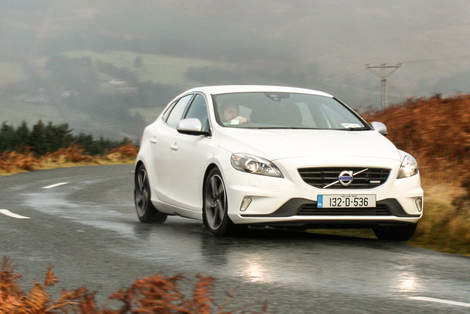
Once up and running on a motorway drive there is less to separate the two cars from a performance perspective and over the course of a week of testing both cars, the Volvo did actually seem to be more fuel-efficient, even though on paper there's nothing between them. Perhaps the ease with which the Golf can be driven harder was a contributing factor in this. As the GTD shares the same suspension setup as the Golf GTI, the ride is firm but by no means uncomfortable. Across a variety of surfaces it feels well damped and deals well with poorer roads.
The Volvo doesn't lag too far behind in the suspension department. In normal driving conditions is gives a softer ride, helped in the case of our test car by the slightly smaller 17-inch alloy wheels. A more noticeable difference in ride comes when both cars are driven enthusiastically - the Volkswagen seems to take whatever is thrown at it and carries on unfazed whereas the Volvo struggles to remain composed at speed on anything other than a very smooth stretch of road.
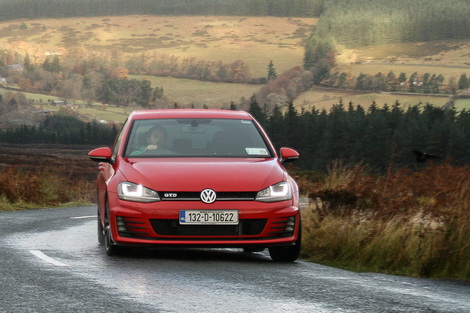
Handling-wise the Golf simply nails it. Everywhere. The steering is well-weighted and along with that well-sorted suspension gives the driver bundles of confidence when driving it hard. Take it over your favourite stretch of road and even the first time you will confident to push it that bit harder than you might in other cars. The clever XDS+ system plays a big role in this too - even if you do go into a corner that little bit too fast the GTD just seems to take care of it all without fuss or drama. Unfortunately for the Volvo the same can't be said. The V40 in our test did come equipped with an adjustable steering assistance feature, which is part of the optional R-Design Style Pack and although enabling the driver to adjust the weighting of the steering it doesn't improve feel through the rim or handling. In the Volvo's defence and, as I mentioned earlier, this is simply a more powerfully-engined V40, not a distinct performance model like the GTD is. Even so, one would hope a 400Nm car can allow its driver to properly exploit the urge on tap. Sadly, the Volvo doesn't.
What you get for your Money
Both cars do come quite well-equipped, as you would expect given the respective asking prices. With the V40 you get a car that is generally well-designed and offers a high degree of practicality, not to mention subtlety, whereas the GTD is certainly the more extroverted of the two. Where the Volkswagen edges ahead is in the overall feel when sitting inside it. Even when not driving the GTD it just feels nicer inside. It's hard to quantify, but if you go and sample both for yourself I think you'll soon understand. Granted the GTD is €3,000 more expensive before you start ticking extra boxes, but the overall experience you'll get from it justifies the additional cost.
Summary - Dave Humphreys
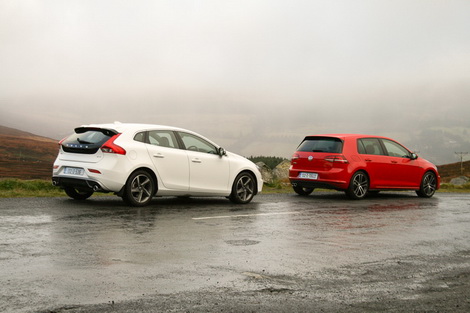
Pitting two seemingly identical cars (going on performance and technical data) up against each other resulted in a far greater difference in real-world driving than expected. These are models that are aimed squarely at those who desire some proper performance mixed with good fuel economy. Both enjoy more than adequate levels of torque for those enjoyable second-gear corner-exiting squirts and have equally capable sixth-gear roll-on power too. But for those drivers that like to occasionally take their recreational driving that bit more seriously the V40 will disappoint. Compare the two cars on paper and the Volvo makes a lot of sense, but spend even half a day with the GTD and your heart will soon overrule your head.
Second Opinion - Shane O' Donoghue
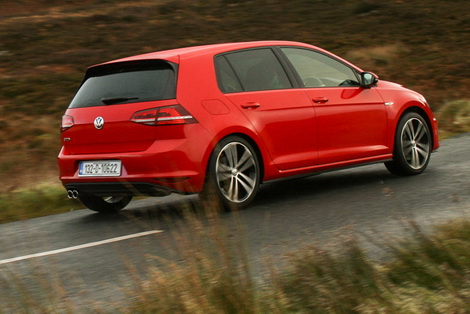
The Volkswagen Golf is nothing short of a sales juggernaut, and, deservedly, the car every other family hatchback has to face up to. The Mk VII, while mildly evolved in terms of styling, has taken a leap forward in several other areas, including refinement and interior quality. Until spending more time with the GTD model we had dismissed it as an irrelevance, mostly because (thanks to efficiency gains in the petrol model) the new GTI is considerably cheaper to buy, but the reality is that the GTD model is much more efficient in the real world and hence a better all-rounder for drivers that rack up the miles.
Arguably the GTD's closest rivals come from within the Volkswagen Group stable. Think Skoda Octavia RS, Audi A3 and SEAT Leon. But Volvo was confident that its D4-powered V40 hatchback would cut the mustard too, even though it's not a specific performance model, as Dave mentioned above. On paper they're pretty inseparable and when the V40 is suitably attired in R-Design garb they both ooze showroom appeal. It's worth noting that the GTD pictured has plenty of tasty options to make it look even better.
Nonetheless, it's the driving experience that seals it for me. I had spent time in both cars individually so I was pretty sure the Golf had the edge, but to put them back-to-back on the same piece of road at the same time in the same conditions was illuminating. In no uncertain terms, the GTD wiped the floor with the Volvo. It was wet and cold so the GTD's XDS+ system really came into its own, keeping the car on line, tucking the nose in and even getting the rear to help out, allowing the driver to keep his foot down longer and more often than in the Volvo. The GTD was huge fun, even in a low grip situation, engaging the driver in the process while also keeping things tidy and safe.
In contrast, the V40 struggled to find traction, it was put off by mid-corner bumps and generally felt way outside its comfort zone when trying to keep up with the Golf. Perhaps the gap in ability wouldn't be quite so obvious on a dry, warm day, but this is Ireland after all.
Now, I'll admit that most drivers, even those that love driving, don't often test the chassis of their own cars on the public road, but we'd argue as ever that a car that is good to drive is also one that helps its driver be safe. The V40 D4 R-Design is a good, desirable, fast and efficient car, but it's not an accomplished driving machine. Any way you cut it, I'd have the Golf GTD every time.

